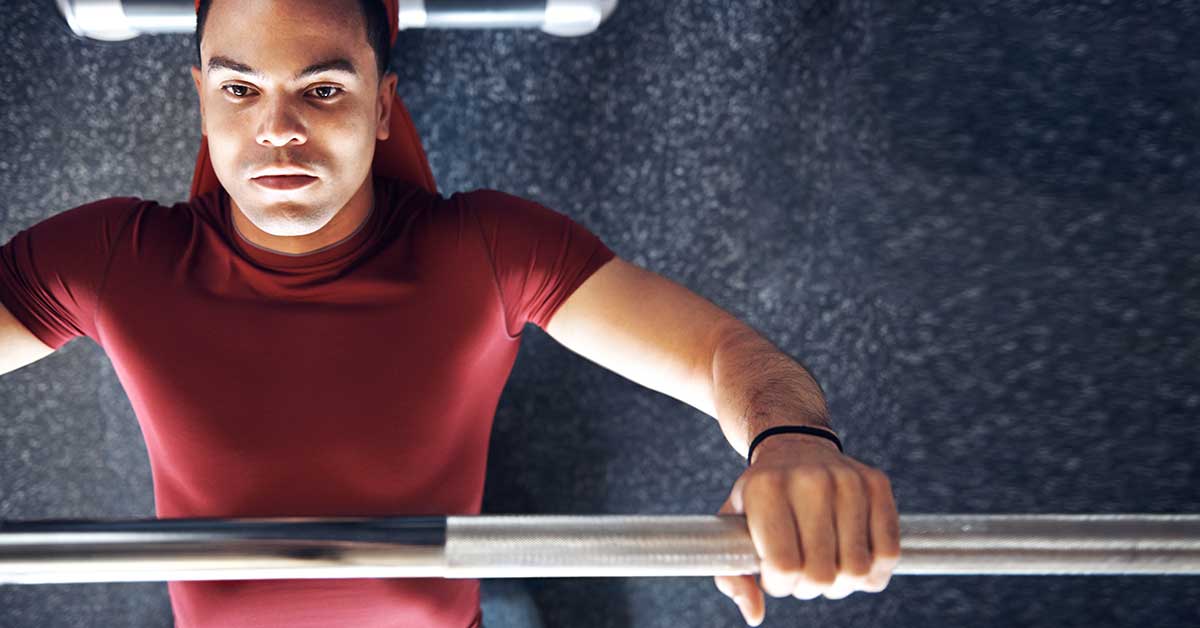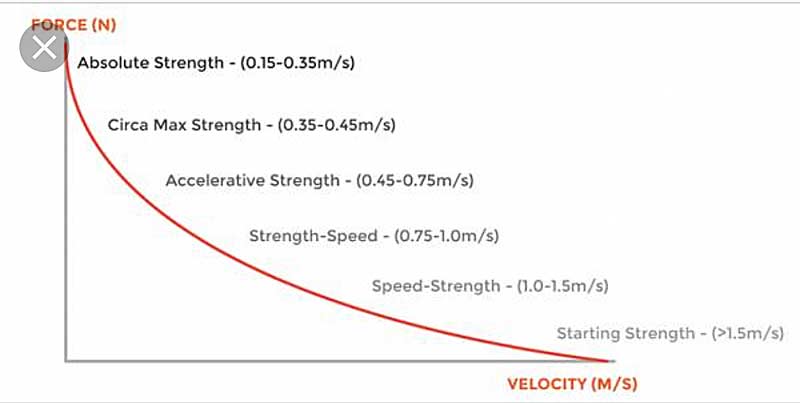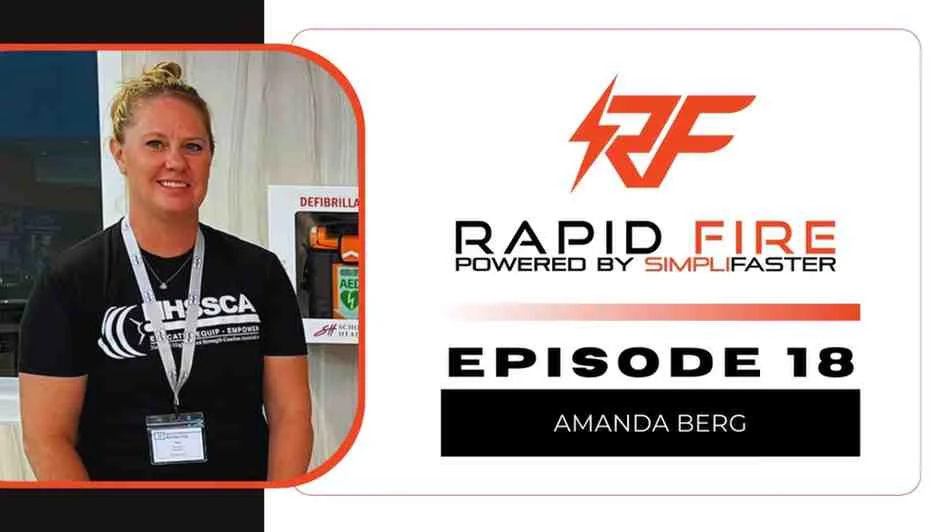
Throughout my years of coaching, a number of different training concepts have come and gone. Some have stayed longer than others. Some I have tried, while others I’ve never believed in enough to implement in the first place. One new method, however, really caught my attention and I thought it could be very useful: velocity-based training (VBT).
First off, I am not the premier expert in this area. That title goes to Bryan Mann. In fact, for more information on this type of training, Mann has written two or three books and many articles. My objectives here are to introduce you to the concept of VBT, offer a starting point, and present firsthand ideas on how I’ve used this concept successfully in both team and individual settings.
Choosing a Device
To apply the concept in practice, you first have to choose a device. Initially, there were only a few options to choose from, but nowadays there are a plethora of tools that work in various ways and are worn in different positions. I was first introduced to one of these devices in the mid-2000s while attending a Tibor Gecsek Hammer Clinic at the University of Georgia. Bert Sorin, of Sorinex Exercise Equipment, also attended and was walking around with a device called a Tendo Unit.
To introduce the Tendo, Bert would have guys attach a string to their belt loop; this string was attached to the device that measured the velocity at which the string was pulled. He would have some of the athletes jump to see at what m/s they were going in a vertical direction.
I tried the device, and to my surprise, I hit one of the fastest measurements ever. Witnessing this, Tibor could not understand how a guy like me could have a higher m/s than he had. And made me do it again—the result was even better. I may be short, but one genetic gift I had was the ability to jump out of the building in my younger, lighter years. I have no doubt this gift is what made me successful as a shot putter.
But I digress—back to the devices. Like I said, currently, there are many devices to choose from: some with a string, some attach to the bar, some attach to your elbow, and some attach to the wrist. A few of the brands available are the Tendo, Beast, Push Device, Bar Sensei, and GymAware. I’m familiar with all the devices except the GymAware, which is said to be the most accurate but is also the most expensive. Although I’m fortunate enough at the high school level to have a great budget, we can’t afford one of these.
Instead, we have a few Tendos, a number of Push Devices, and one of each of the Beast and Bar Sensei. I find that as long as you use the same device each session, you can accomplish the objective you set. In my experience, when doing slower movements like a squat, bench, and deadlift, the range of devices are very similar when measuring, if not the same. With more ballistic movements, however, the differences can be a little greater, though the results are still in the same relative area.
I suggest doing your research and finding the one that best suits you. If money were unlimited, my choice would be the Tendo. Keep in mind, Bar Sensei continually improves their product, and they’re a very close second and much more cost effective.

Training Team Sport Athletes
Using VBT in a team setting can be beneficial in many ways. I will describe a few ways I use it throughout the year with different teams of both male and female athletes.
As a beginning example, let’s use football during the season. Our lifts take place on Saturday (the day after the game) and Monday or Tuesday during the week. We tend to do our squat and bench type training on Saturday since it gives the maximum time for recovery before the next game. A coach must take into consideration that the athletes get beat up throughout the season, and everything they do adds up cumulatively. What I mean by this is the only time an athlete is truly fresh is for the first game, and even then they’ve had previous weeks of double days and hard training, depending on the program.
Therefore, an athlete’s squat max from the summer, while fresh, isn’t necessarily going to be the same on a Saturday morning at 8 am after a four-quarter war the night before. At this point, if you’re using percentages to assign intensity for the workouts, you could be setting your athletes up for failure and even nervous system fatigue.
This is where VBT comes in. Bryan Mann assigns specific speeds for the characteristic you’re training for, and the Push Device has a chart with a specific range of speeds.
These characteristics include:
- Absolute strength
- Max strength
- Accelerative strength
- Strength speed
- Speed strength
- Starting strength

Speed Strength
To keep it simple, let’s focus on speed strength. This is the characteristic I train for the most and is the most important characteristic for success in athletics. The Push chart lists that speed strength is trained at between 1.0 m/s and 1.5 m/s average velocity. Therefore, when the athletes come in on Saturday, the intensity is determined by speed rather than percentages.
If you use percentages to train, there’s a high probability that you’ll train a different characteristic than the one you planned for. This can result in overtraining and create a hole that will be extremely challenging to get out of during in-season play.
If you use percentages you'll likely train a characteristic different than the one you planned for, says @nick_g_garcia. Share on XLet’s return to the data point for speed strength listed at 1.0-1.5 m/s average velocity on the Push chart. There are a few different ways to measure training when applying VBT. Besides average velocity, we can use peak velocity. I prefer to use both.
I use average velocity when doing the less ballistic total body movements, like the squat, bench, and deadlift, and peak velocity when using more ballistic movements like the clean and snatch. The reason is that, while performing lifts like the clean and snatch, many things can affect the average velocity: range of motion, small injuries, etc. Because movements like the squat, bench, and deadlift are less complicated to perform, they are not affected in the same way.
Although the Push chart gives us a starting point for each of the training characteristics, I tend to stick with Bryan Mann’s speed recommendations, which you can find in his book Developing Explosive Athletes: Use of Velocity Based Training in Training Athletes, 3rd Edition. He lists speeds for many different movements, including various types of pulls.
Assigning speeds for lifts keeps the nervous system firing & the athletes ready for a long season, says @nick_g_garcia. Share on XWhen athletes come in to train during the season, we assign them a specific speed as a measurable for each main lift rather than a percentage. Training in this manner helps keep the nervous system firing and helps the athletes endure a long grueling season.

Monitoring Team Readiness
Before we move on from the team aspect of VBT, let’s look at how we can use VBT to determine team readiness. Often in a team environment, the results of the pre-season and in-season will determine if you have an opportunity to move on to the bigger competitions, like regionals and finals.
If the in-season is not successful, then the chances of the team continuing into the post-season become very low. Taking all of this into consideration, how do you go about determining your team’s readiness for the season and, for that matter, week to week during the season?
Currently, Catapult can track many different training metrics for individual team athletes, including mileage and running patterns. I’m the first to admit that I am no expert on Catapult—I do not own the system, nor have I used one. I do, however, believe it’s a valuable tool if you have the budget for it. Since Catapult is still fairly new at the high school level, it was not an option during our football season. Therefore, I had to come up with a way to determine whether our training on and off the field was beneficial or detrimental to our performance on Fridays.
How can we determine our training is beneficial or detrimental to our meet performance? says @nick_g_garcia Share on XAnd then it came to me. For a long while now in my own training (inspired by Dr. Bondarchuk’s methods), I’ve used bar velocity devices as secondary proof that I was in peak performance. I did this by comparing my daily throwing results with my bar velocity when I lifted. Simply put, when my throws were up, my speeds were up. When my throws were down, my speeds were down. Also, when I reached peak performance, my throws were always up as well as my bar speed—the patterns mimicked each other perfectly.
The idea, then, was to hold our first training session using VBT one week before our first game to produce speeds that I considered realistic since they were not completely fresh. I felt this would be more representative of the speeds we may see during the season based on fatigue from normal everyday practice.
I chose one athlete from each position to represent the different duties on the field: defensive back, linebacker, defensive lineman, offensive lineman, running back, and wide receiver. I also included two athletes who may not play much and not get as many reps during practice.
We established weights they were to use for the hang clean, squat, and bench based on the literature: 1.35 m/s for the hang clean and 0.8-1.0 m/s for the squat and bench (for the record, this was average velocity, not peak velocity). Throughout the year, we would continue to use these same weights week in and week out while charting the speeds of each set of each lift.
As expected, the athletes who participated in most of the plays saw a decline in their average velocity by the time we reached the middle of the season. The players who played less kept within the speed parameters since they had not accumulated weeks of playing fatigue.
In mid-season, the team must feel as good as possible to ensure a late-season run, says @nick_g_garcia. Share on XWhen moving into the middle of the season, it is increasingly important for a team to be feeling as good as possible to ensure a late-season run. The data collected can help us, as coaches, determine how to attack the last half of the season. Do we need to back off, or can we go a little harder each day? In our case, we needed to back off from what we were doing every week. Our speeds were down each week and showing no signs of improving.
Having the data that proves you need to do something different, however, and getting the higher-ups to change something are two different things. Common sense may say if you’re unsuccessful at a task, the answer is to work harder. In reality, the best answer is to back off to keep your athletes fresh enough to perform the way you coached them to perform. I don’t have the answer on how to get the higher-ups to do something different, but this is one way to determine your team’s readiness throughout the season.

Using Bondarchuk’s System with Individual Athletes
Let’s switch gears and look at how I use VBT with individual athletes. I mentioned using it as a second indicator of where my body is in relation to peak form using Dr. Bondarchuk’s training system. One of the cycles in this system is the Developmental Cycle (my previous article describes the program, “The Cycle and Exercise Classification of Dr. Bondarchuk’s System”).
For a Developmental Cycle, we want the lifting percentages to be roughly 60-70% of max. The objective is to move each rep of each set as fast and dynamic as possible. Ultimately, we’re training the speed strength characteristic. The Push chart lists speed strength at 1.0-1.5 m/s using average velocity. Therefore, we would find a weight that allowed us to be just under 1.0 m/s for every rep of every set (give or take), which according to the Push chart, falls into the realm of strength speed.
We chose these speeds because when we hit peak form, theoretically, our throws and bar speeds should be up, taking us into that speed strength realm. If we had begun in the speed strength realm and hit peak form, it may take us into training the Starting Strength characteristic. We will then risk not having enough of a stimulus in the weight room if the speeds are too high. This strategy has worked great for us.
Another way I use VBT with individuals is having a strength-oriented day and speed-oriented day. During the track season, we normally train twice a week: a strength-based lift on the first day of the week and a speed-oriented lift the day before or the day of the meet. Occasionally, our meets will fall on Fridays, including the Master’s meet and State Prelims.
I don’t comprise my program based on our meet schedule. Don’t get me wrong, we have a structured plan in place to peak at the proper time. If, however, we’re scheduled to lift on a Friday and a meet falls on that day, so be it. We’ll come in during the early morning and hit our speed-oriented lift, in which every rep of every movement must be in the speed strength realm.
A pre-meet speed-oriented lift session on the day of a meet can enhance race performance, says @nick_g_garcia. Share on XEach time we’ve had a meet fall on the same day as a speed-oriented lift day, we’ve hit a seasonal best or personal best that same night. Therefore, I have no problem lifting for speed on meet days. In fact, this shows a pre-meet lift can enhance performance.

Training Female Student-Athletes
Finally, let’s look at how I use VBT with female student-athletes. In my experience, when female athletes first begin to train, the majority are intimidated by the weight room. We introduce them to kettlebell and dumbbell work to get them a bit more comfortable. Down the road 8-12 weeks, when we begin barbell lifts, these athletes tend to underestimate their lifting capabilities.
I then give each athlete an iPad and a Push Device. I tell them the speeds I want the bar moving between. Let’s use a squat variation as an example. I assign a speed of 0.8-1.0 m/s: any weight that moves slower than 0.8 is too heavy, and any weight that moves above 1.0 is too light. Ultimately, this range gives them an idea of where they should be, and since we’re training in the speed strength realm, the weight is not really heavy regardless.
This has helped the female athletes I coach progress much faster and have much more confidence in what they’re doing every week—not to mention, they feel a bit more special since they get to use a fancy device.
These are just a few ideas on how to get started with VBT as well as a few ways to apply it to your training. If you have any questions, feel free to email me at [email protected], or you can sign up to listen to the Hmmr Media podcast about VBT.




